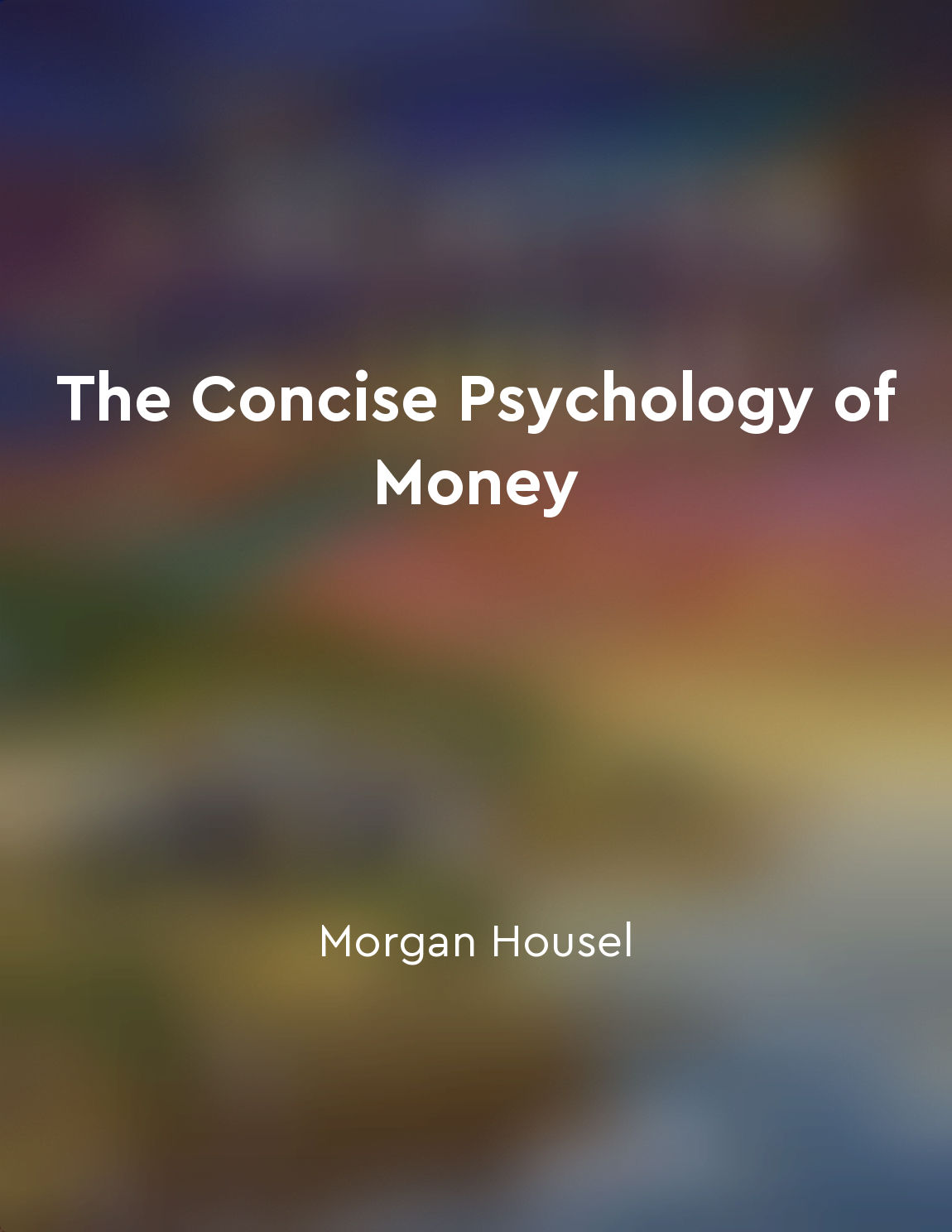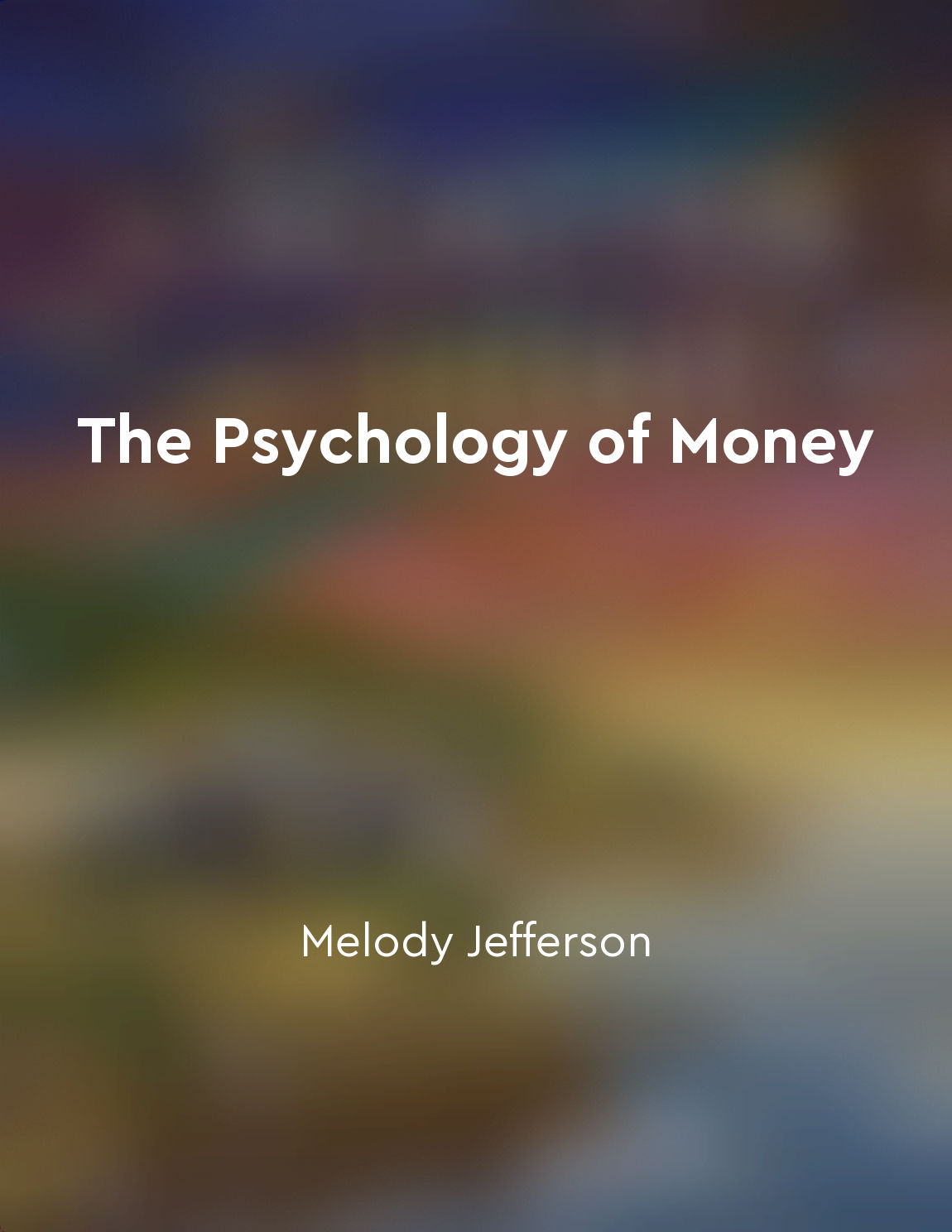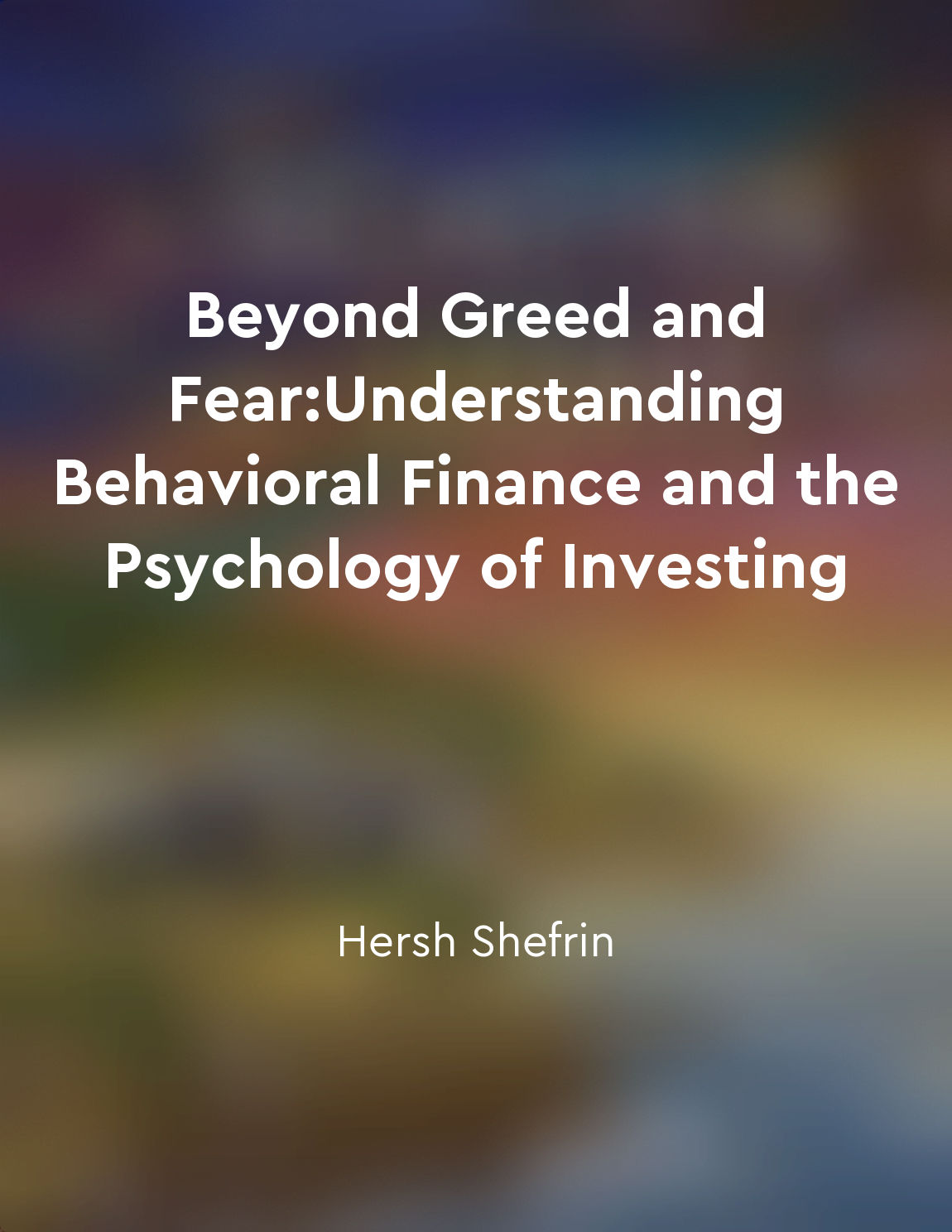Herding behavior creates market bubbles and crashes from "summary" of The Little Book of Behavioral Investing by James Montier
The tendency for individuals to follow the crowd is a well-documented phenomenon in the world of investing. When investors see others buying a particular stock or asset, they often feel compelled to do the same, even if it goes against their own better judgment. This behavior can lead to the formation of market bubbles, where prices become detached from the underlying fundamentals of the asset. During a bubble, prices are driven up by the collective actions of investors who are all buying in the hopes of selling at a higher price later on. This herd mentality can cause prices to soar to unsustainable levels, creating a bubble that is bound to burst at some point. When the bubble eventually does burst, the market experiences a crash as prices plummet back down to more realistic levels. The problem with herding behavior is that it can create a self-reinforcing cycle. As more investors jump on the bandwagon and prices continue to rise, even more investors are drawn in, believing that they can profit from the ever-increasing prices. This behavior feeds on itself until the bubble inevitably bursts, leaving many investors with significant losses. One of the key drivers of herding behavior is the fear of missing out, or FOMO. Investors see others making money in a particular asset and worry that they will miss out on potential gains if they don't act quickly. This fear can lead to irrational decision-making and a lack of independent thinking, as investors simply follow the crowd without considering the risks involved. To avoid falling victim to herding behavior, investors should strive to maintain a disciplined and rational approach to investing. This means conducting thorough research, sticking to a well-defined investment strategy, and avoiding the temptation to follow the crowd. By staying true to their own convictions and not succumbing to the pressures of the herd, investors can protect themselves from the pitfalls of market bubbles and crashes.Similar Posts

Understanding our relationship with money requires selfreflection and introspection
To truly grasp the dynamics of our relationship with money, we must engage in a process of self-reflection and introspection. T...

A high income does not guarantee financial security
It's a common belief that a high income automatically leads to financial security. After all, more money means more resources, ...
Awareness of cognitive biases is crucial for successful investing
Understanding cognitive biases is essential for effective investing. These mental shortcuts can lead investors astray, causing ...
Invest in accordance with financial goals
When it comes to investing, it is crucial to have a clear understanding of your financial goals. This means knowing what you ar...
Balancing present enjoyment with future financial security
Balancing present enjoyment with future financial security is a delicate dance that many people struggle to master. It involves...

Education and experience do not always prevent behavioral biases
One might think that with education and experience, individuals would be able to avoid falling prey to behavioral biases. Howev...

We are susceptible to the influence of priming
Priming is a powerful force that can shape our thoughts and behaviors without us even realizing it. This concept suggests that ...
Be cautious of overconfidence
Overconfidence is a dangerous trap that many of us fall into without even realizing it. We tend to believe that we are smarter,...
The wisdom of Merger Masters can guide investors towards profitable outcomes
The tales of Merger Masters are not just stories of past deals and strategies, but they are also a source of valuable wisdom th...

Behavioral finance challenges traditional economic theory
Traditional economic theory assumes that individuals always act rationally, making decisions based on all available information...
